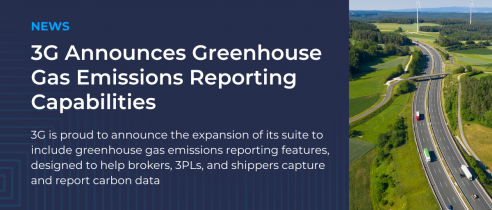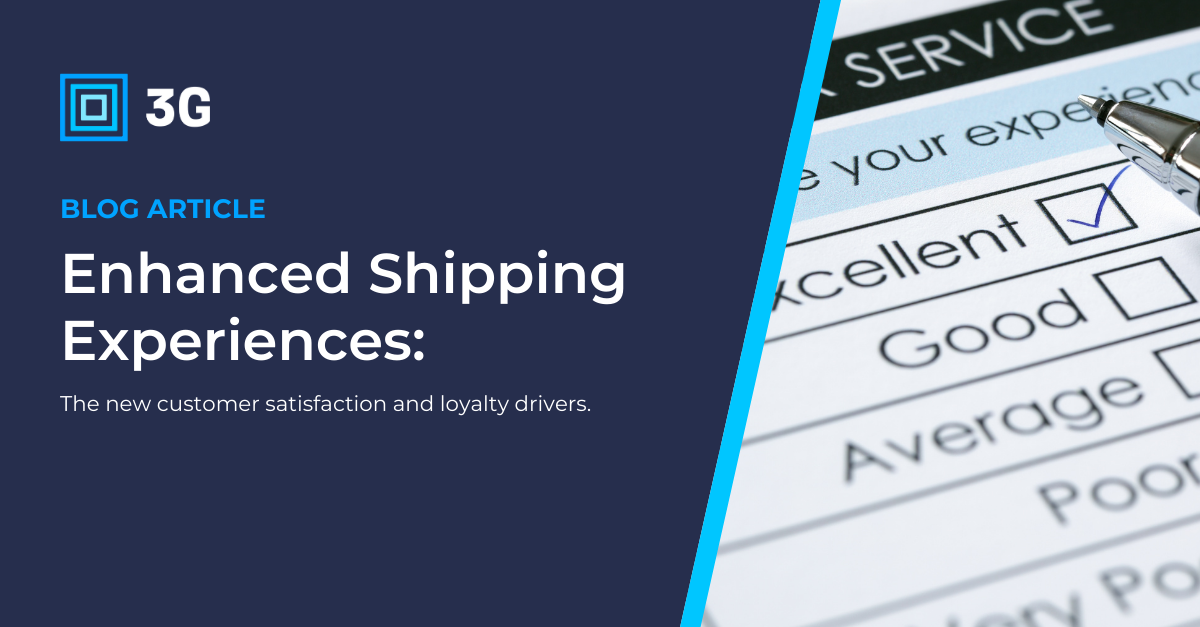While international shipping faced unprecedented disruption at the turn of the decade, domestic delivery had the opposite issue: a dramatic surge in package delivery volume, driven by the rapid and unexpected growth in e-commerce. In fact, global e-commerce sales reached $1.119 trillion in 2023.
In addition to increasing demand on shippers and the transportation industry, the growing emphasis on at-home delivery has shifted the metrics of customer satisfaction. Customer experience is no longer limited to the in-store environment, product quality, or packaging — it encompasses the timeliness of order fulfillment, deliveries, and transparency about shipping status. Failure to adapt to these new expectations can significantly impact revenue. Want a clear picture of how fulfillment impacts customer loyalty? About 50% of surveyed consumers say they would switch to a new brand or retailer after just one bad experience — including shipping experiences.
Shippers must invest in the new modes and behind-the-scenes logistics it takes to ensure on-time delivery if they want to continue to compete in the e-commerce landscape.
The Shipping Experience Customers Expect in 2024
After product quality, production efficiency, and effective marketing and sales campaigns, shippers in the e-commerce era have a whole new set of metrics and processes to worry about: transportation and logistics. To remain competitive, brands need to play a direct role in ensuring:
Order Fulfillment
Filling an order is a basic step in the process, but it’s also one that takes a lot of time and labor. Missed or incorrect orders also take their toll on a brand’s image, and on the customer or client’s patience.
Coffee producer Intelligentsia is a perfect example of how a change in software can have an enormous effect on order fulfillment. Using Pacejet, Intelligentsia gained one to two hours of fulfillment time per day and reduced their number of days with missed fulfillment targets by 80%.
Fast Delivery
Because there are now so many competing companies selling similar products at the same price points, one of the only avenues shippers have to compete is by offering the fastest delivery.
A recent survey found 68% of online shoppers consider fast delivery options at checkout to be the determining factor in whether they make a purchase. Expectations around delivery times have also increased sharply since the pandemic. Now, about half of online shoppers are only willing to wait two to three days for their orders to arrive, while 30% would prefer one-day delivery.
Free Delivery
Today’s consumers don’t just want products fast, or even cheap — they want their orders to be delivered for free. In fact, free delivery is the main reason 45% of shoppers buy online. But many shippers struggle to offer free shipping without eating into their profits. In this environment, finding ways to reduce shipping costs and offer free delivery for lower and lower order amounts is a never-ending mission.
Hassle-Free Returns
On top of speed and low cost, today’s consumers are after the most convenient shipping experience possible. That means arriving fast and on time, without any damages, as well as being easy to return if there are issues or the product isn’t what they thought. Researchers found that 47% of shoppers prioritize buying from brands that assure their product arrives safely or can be promptly replaced, minimizing inconvenience.
Order Tracking
Another recent development: More than two thirds of consumers want to know where their order is at all points in the delivery journey. This is especially true when an order is delayed for any reason, but consumers also want the convenience of being able to check the delivery status to confirm it’s expected to arrive on time. Fortunately, shippers can benefit from implementing this capability as well because it reduces the need for shipping customer service interactions and on-call representatives.
Building the Infrastructure for Modern Delivery
Meeting post-pandemic consumer demands requires significant investment in logistics infrastructure. Shippers need the ability to carefully select carriers and third-party providers who are optimized for maximum efficiency and customer satisfaction, or get directly involved in improving shipping and fulfillment processes. As the landscape becomes more competitive, shippers need to look to solutions like:
Streamlined Fulfillment and Automation
A key to decreasing delivery times is to eliminate the manual process of selecting carriers for shipments. Trying to manually determine the best carrier for hundreds, if not thousands of shipments, leaves the door open to choosing the wrong carrier for the wrong shipment. Using the right shipping software can take this once manual process and automate it, ensuring your customer’s order will not only be delivered on time, but also at the best price available.
Packing automation technology is another critical area of investment, ranging from software that improves labeling accuracy to robotics that assist with actual picking and packing at the fulfillment center. Shippers will need to analyze their operation and prioritize upgrading the areas most in need of automation and efficiency improvements.
Transportation Optimization
Beyond the fulfillment center, shippers also need to optimize their carrier selection process, both in terms of securing the best rates and the most efficient transit times. Transportation software can help users track this information in a single dashboard, displaying metrics about past performance right alongside current rates for easy comparison between different vendors.
For shippers who are more hands on with actual transportation planning, they can leverage route planning and optimization capabilities that are part of modern transportation software to ensure goods are shipped along the most efficient routes, minimizing delivery times as well as fuel and labor costs that can eat into profit margins.
Multi-Modal Shipping Capabilities
The pandemic brought about a major expansion in the different modes of transport shippers are using, both on the parcel delivery side and the long-distance transportation side.
Multi-modal shipping is becoming increasingly popular to reduce cost and improve shipping experiences by maximizing the strengths of different modes like plane, train, and freight ship, in addition to trucks. However, shippers need transportation software capable of managing all of these different modes on a single platform to truly achieve efficiency gains.
Seamless Integrations
To ensure the delivery speed and cost efficiency customers demand, shippers need fully connected systems to unify data and processes as much as possible. That means implementing modern transportation and shipping software that integrates seamlessly with other business-critical platforms like inventory and warehouse management systems as well as enterprise resource planning (ERP). Consolidating this data into one central transportation planning software will enable better carrier selection, routing, fulfillment, and more.
3G: The Backbone for Customer Satisfaction in E-commerce
There are a host of transportation software platforms available, but not all provide the features and functionalities needed to effectively compete in today’s landscape — and fewer are able to grow with shippers as their companies evolve. 3G stands out as an end-to-end shipping and transportation optimization solution that improves efficiency for small shippers and multi-million dollar enterprises alike. Its robust array of features is designed to help users not only meet, but easily exceed customer expectations in today’s highly competitive e-commerce market.
Want to improve your customers’ shipping experience? Schedule a 3G demo today.








